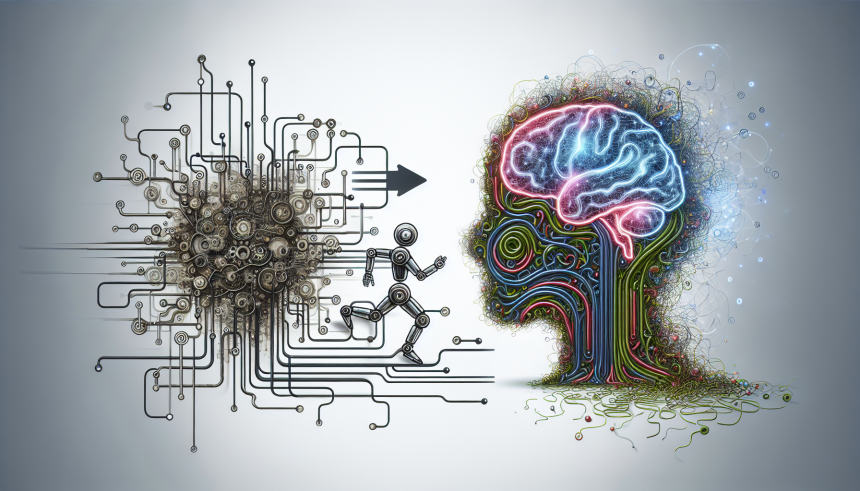Understanding AI Integration in Process Simplification
1. What is AI Integration?
AI integration refers to incorporating artificial intelligence technologies and services into existing systems and processes. This integration enhances operational efficiency, reduces manual labor, and improves decision-making through data analysis and automation.
2. The Role of AI in Process Simplification
AI aids in process simplification by streamlining workflows, eliminating redundancies, and enhancing accuracy. Key areas where AI proves beneficial include:
-
Data Analysis: AI algorithms can process large datasets quickly, uncovering insights that drive better decision-making. Techniques such as machine learning (ML) enable predictive analytics, giving businesses a competitive edge.
-
Automation: By automating repetitive tasks, companies can minimize human error and significantly reduce time spent on mundane activities. For example, robotic process automation (RPA) automates rule-based tasks across different applications.
-
Natural Language Processing (NLP): NLP enables computers to understand and respond to human languages, allowing for smarter customer service solutions, chatbots, and sentiment analysis.
3. Identifying Processes for AI Integration
Not all processes will benefit equally from AI integration. Organizations should assess the following criteria to select suitable processes:
-
Repetitiveness: Tasks that involve repetitive actions are prime candidates for automation. For instance, data entry and invoice processing can significantly benefit from RPA.
-
Data Richness: Processes dealing with large volumes of data, such as sales forecasting and inventory management, provide more opportunities for AI insights.
-
Complexity: Processes that are overly complex or prone to human error can be simplified through AI. Implementing ML can help in optimizing supply chains and inventory levels.
4. Challenges in AI Integration
While the benefits of AI integration are substantial, several challenges need addressing:
-
Data Quality: AI systems require high-quality data. Organizations must ensure their data is clean, relevant, and organized before feeding it into AI models.
-
Integration with Legacy Systems: Many businesses operate with outdated legacy systems that resist easy integration with AI technologies. Organizations must strike a balance between modernization and maintaining effective legacy systems.
-
Bias in AI Models: Poorly trained AI models can perpetuate biases, leading to skewed outcomes. Continuous monitoring and refinement of AI algorithms are necessary to mitigate this risk.
5. Best Practices for AI Integration
To maximize the benefits of AI integration, businesses should follow these best practices:
-
Start Small: Begin with pilot programs in less critical areas to understand the dynamics of AI integration. Gradually expand to more complex scenarios once confidence builds.
-
Engage Stakeholders: Involve employees, management, and IT teams in the planning and implementation process. Their insights can lead to better integration strategies.
-
Continuous Learning: AI technology is ever-evolving. Organizations must stay updated on the latest advancements to leverage opportunities for enhanced efficiency.
6. Case Studies of AI in Process Simplification
-
Manufacturing Industry: General Electric has implemented AI-powered analytics in their manufacturing processes. By using predictive maintenance, they have minimized downtime and optimized maintenance schedules based on real-time data.
-
Healthcare Sector: Mayo Clinic utilizes AI to analyze medical imaging. AI systems can assist radiologists by identifying potential health issues faster and more accurately than manual reviews.
-
Financial Services: JPMorgan Chase uses AI algorithms for fraud detection. By analyzing transactions in real-time, AI can flag suspicious activities, enhancing security and reducing fraudulent losses.
7. Tools and Technologies for AI Integration
Several tools and technologies facilitate effective AI integration:
-
Machine Learning Platforms: Google AI Platform and Microsoft Azure ML provide robust frameworks for training and deploying ML models.
-
Natural Language Processing: Platforms like IBM Watson and Google’s Natural Language API allow companies to implement advanced NLP capabilities in customer service applications.
-
Robotic Process Automation: Tools like UiPath and Automation Anywhere simplify the automation of repetitive tasks, streamlining workflow management.
8. Measuring the Impact of AI Integration
To evaluate the effectiveness of AI integration, organizations should measure the following key performance indicators (KPIs):
-
Time Savings: Assess the reduction in time spent on tasks before and after AI implementation.
-
Operational Costs: Calculate cost reductions associated with improved efficiency and reduced manual labor.
-
Error Rates: Monitor the frequency of errors pre- and post-integration to demonstrate increased accuracy and reliability.
9. Future Trends in AI Integration
As technology evolves, so do the opportunities for process simplification through AI. Some emerging trends include:
-
Expanded Use of AI Ethics: There is a growing emphasis on ethical AI use, ensuring that AI systems operate transparently and fairly. This trend aligns with broader societal demands for responsible technology.
-
Integration with IoT Devices: The synergy between AI and the Internet of Things (IoT) will lead to smarter automation in various scenarios, including smart cities and connected homes.
-
AI in Decision-Making Frameworks: Organizations are beginning to integrate AI into higher-level decision-making processes, relying on AI insights to determine strategic directions.
10. Conclusion on AI Integration and Process Simplification
Navigating through the maze of AI integration may seem daunting, yet its potential for simplifying organizational processes is immense. By understanding the benefits, challenges, and best practices associated with AI, businesses can strategically enhance operational efficiency. Such an approach not only addresses current inefficiencies but also sets a foundation for growth and innovation in the future.


